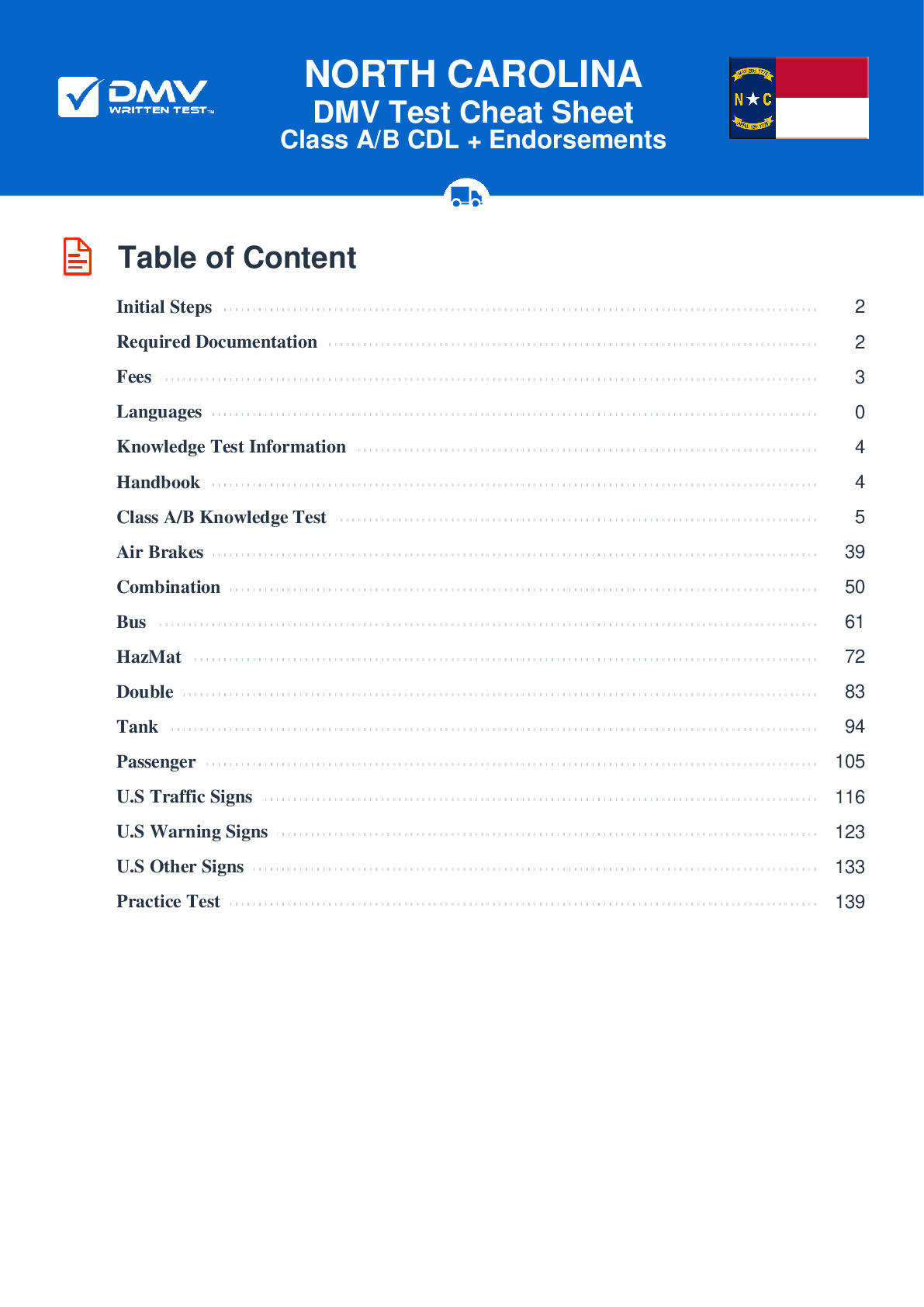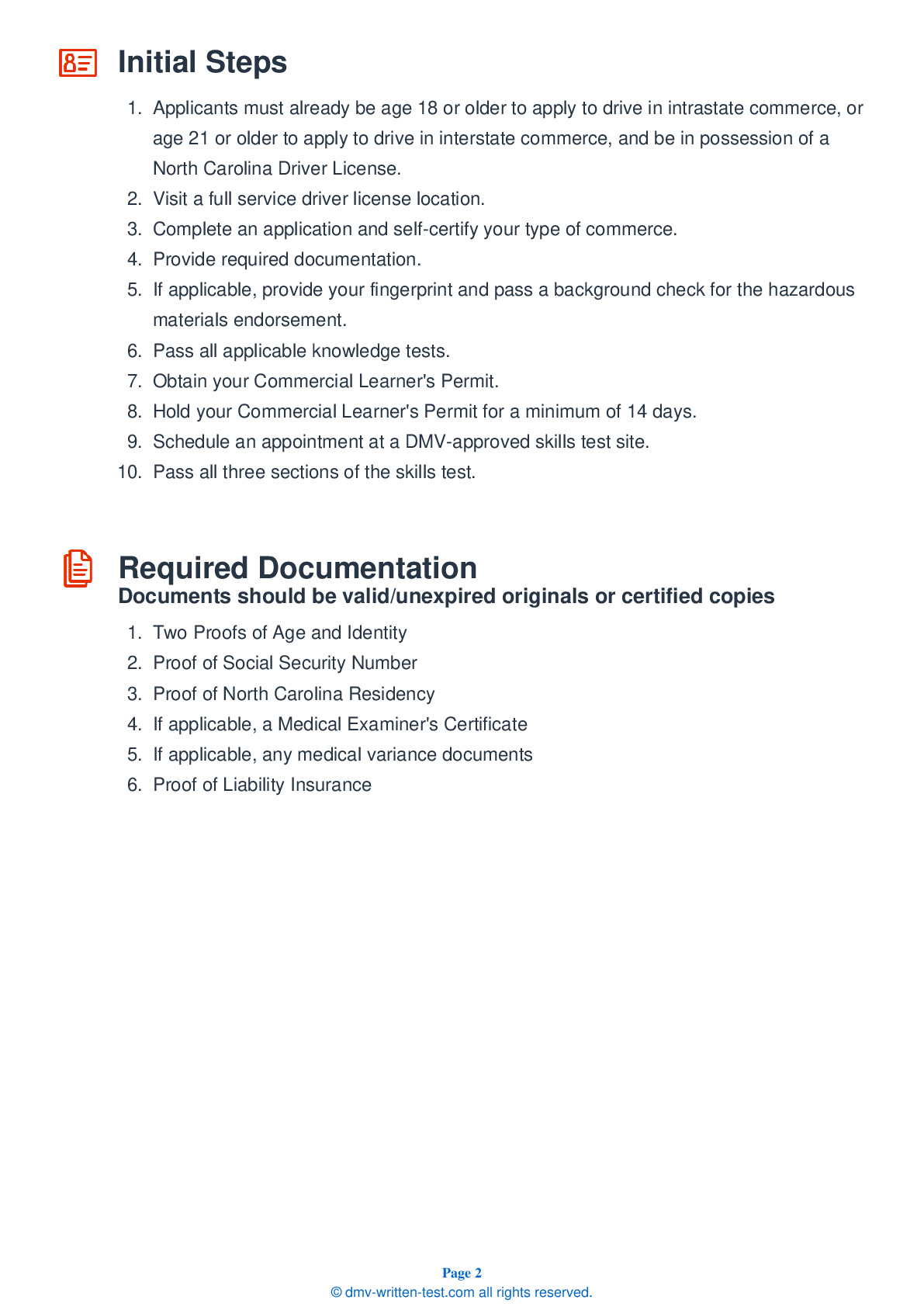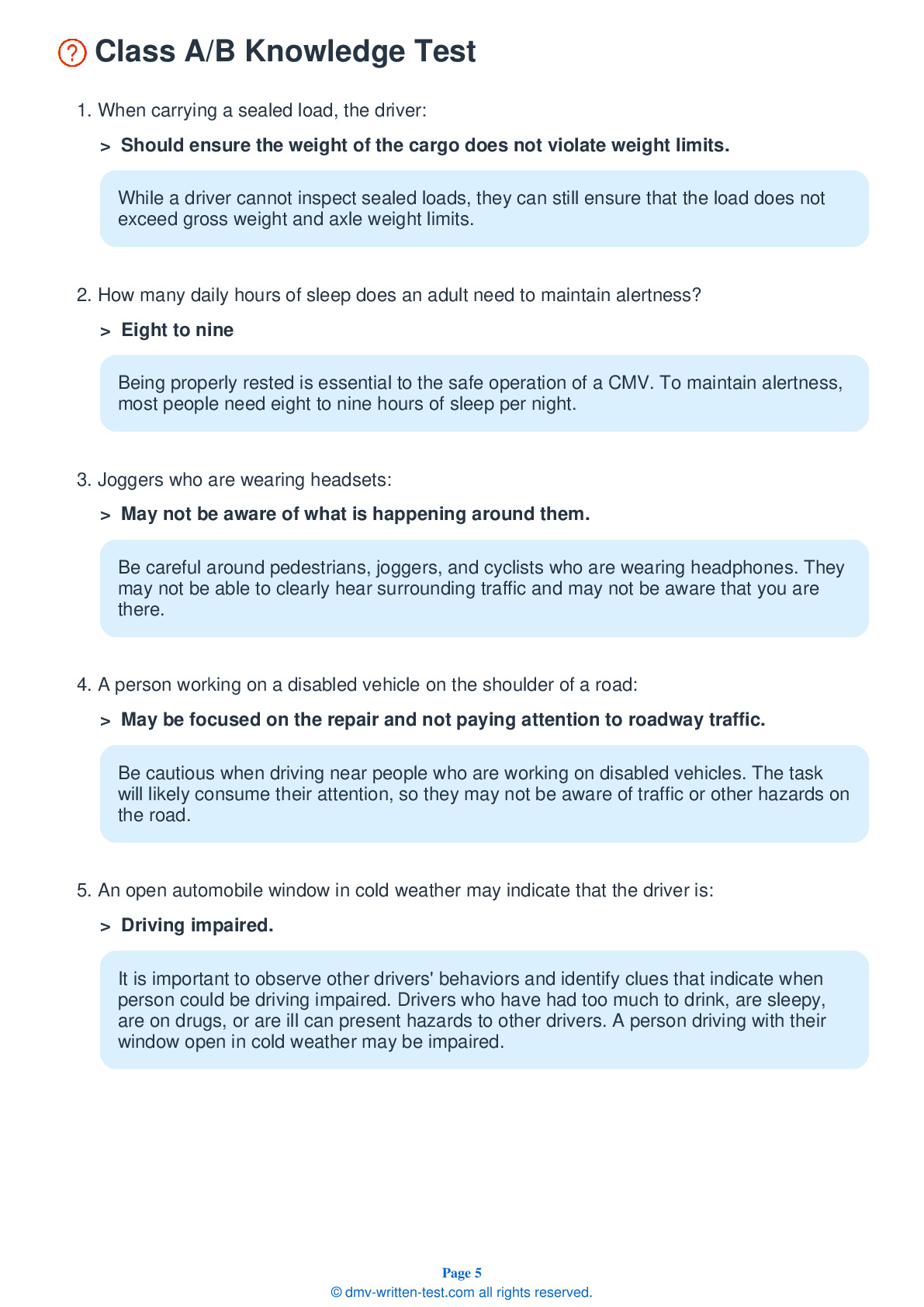Combination
All applicants who are applying for a Class A CDL should be prepared to take the Combination test. This test covers information found in Section 6 of the Commercial Driver License Manual. Section 6 provides the information needed to safely operate tractor-trailers, doubles, triples, and straight trucks with trailers. The test is made up of 25 multiple-choice questions, and applicants will need to correctly answer a minimum of 20 questions to pass. The Combination test is not a replacement for the Double/Triple endorsement test.
Number of Question
Passing Score
1. Before backing your tractor under the trailer, make sure your trailer brakes are:
Explanation
Correctly following the steps to couple and uncouple trailers is vital to safely operating a combination vehicle. Before backing your tractor under the trailer while coupling, make sure your trailer brakes are locked.
2. An air supply control lever should be in its "normal" position when you are:
Explanation
Tractor protection controls in older vehicles may be operated by levers instead of knobs. If an air supply control is set in its "normal" position, it is properly set for you to pull a trailer.
3. A tractor protection valve is:
Explanation
On combination vehicles with air brakes, the tractor protection valve keeps air in the tractor or truck brake system, should the trailer develop a bad leak or break away from the tractor.
4. Which of the following will not help prevent a rig from rolling over?
Explanation
To help prevent a rig from rolling over, you should keep the weight of the cargo as close to the ground as possible when loading. You should also drive slowly around turns.
5. Place the trailer air supply control in its "emergency" position to test:
Explanation
Be sure to test the trailer emergency brakes before beginning a trip. After ensuring that the trailer rolls freely, you can test the emergency brakes by pulling out the trailer air supply control, or placing it in the "emergency" position. Pull forward slightly with the tractor and make sure the trailer does not move.
6. Fully-loaded rigs:
Explanation




